The Ultimate Guide to Bathroom Tiles
Bold, bright or barely-there neutrals? Let your walls do the talking.
If so, you’ll be in safe hands with Adamson’s. Got a question, want an idea of price or ready to book your FREE home design visit?

Taps might seem like a small detail, but they can make a big difference to both the look and function of your bathroom so we think it’s well worth taking the time to find the right ones. There are lots of things to consider with your bathroom taps – styles, finishes, placement – the list goes on. We’ve covered every element in our complete guide below.
The shape of your tap sets the tone for the rest of your bathroom. Some are slim and cylindrical; others are bold, square-edged or curved like a waterfall.
Here’s a quick breakdown of common shapes to choose from:
Curved spouts
Soft and timeless, these are a versatile option for both classic and contemporary bathrooms.
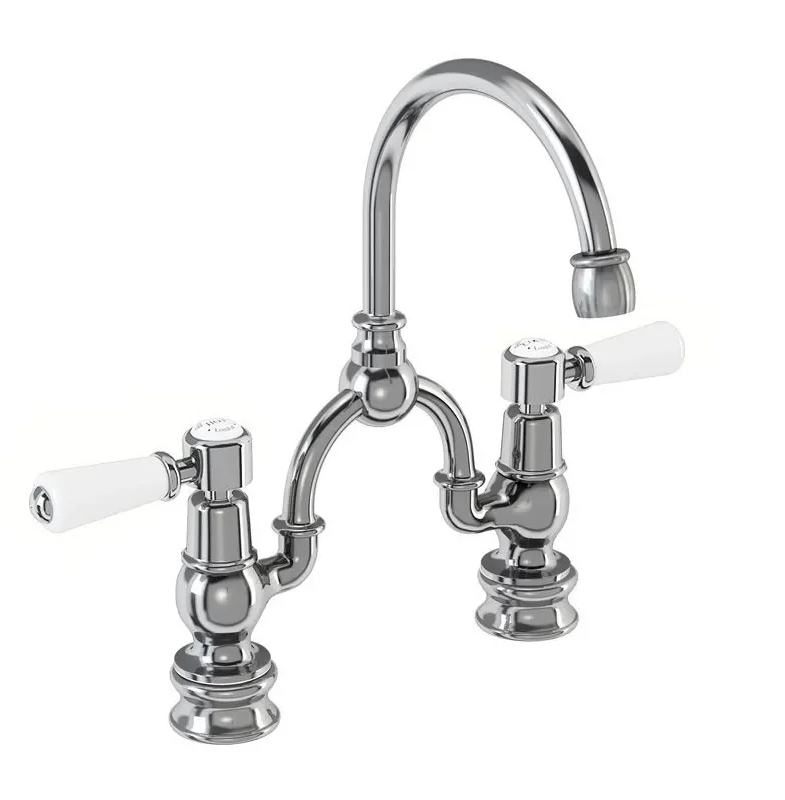
Angular/Geometric
Sharp lines and flat tops give a striking, modern feel.
Waterfall spouts
These are a bit of a luxury add on, typically paired with modern styles. An open top spout lets the water cascade. If you’re after a spa-like feel, these are a great choice.
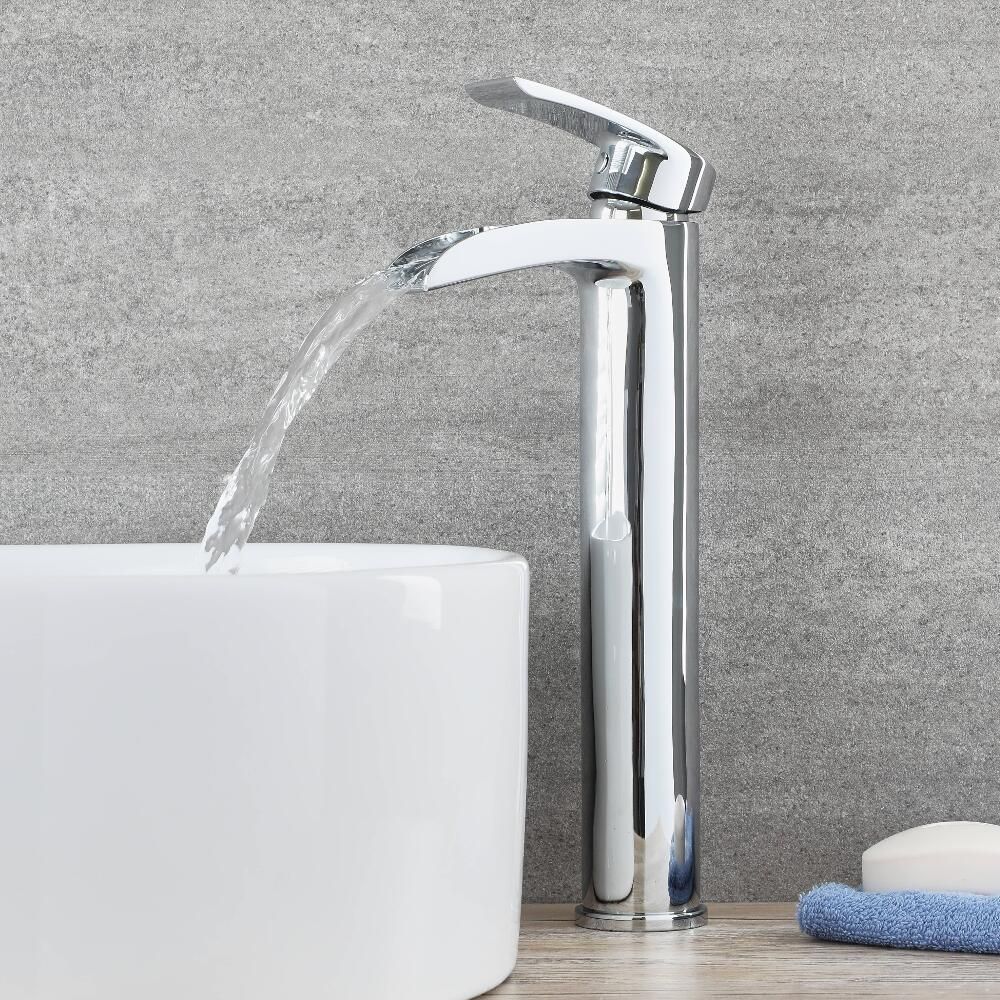
Minimal cylinders
These have increased in popularity in recent years and are typically found in modern bathrooms, due to their sleek, architectural profile.
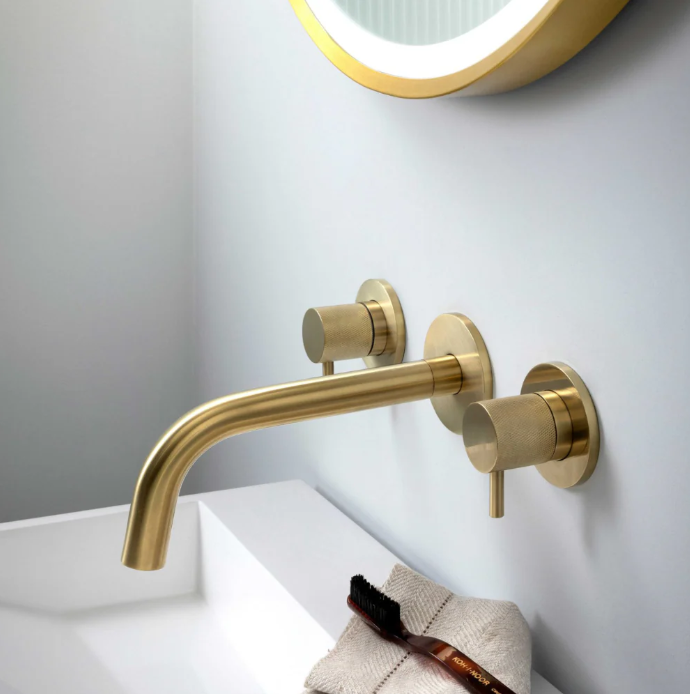
Style Tip: Whichever shape you go for, we always advise choosing a shape that mirrors the other design elements throughout your bathroom. Square, angular taps go well with rectangular basins and baths, round, curved taps complement oval and circular basins.
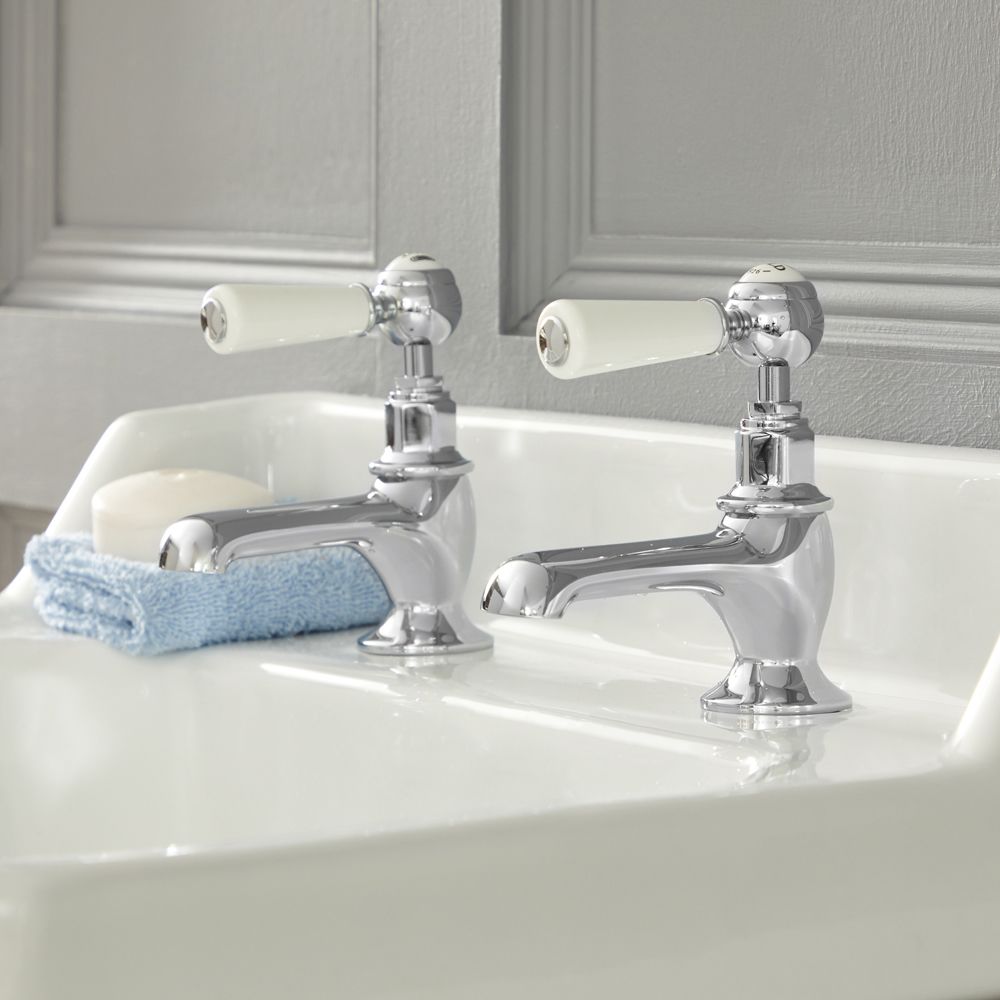
Traditional taps are all about character, craftsmanship and a nod to classic British bathroom design. They’re ideal for period properties, country homes or anyone who loves a vintage-inspired aesthetic.
Common features:
Crosshead or lever handles
Curved spouts or swan-neck designs
Detailed ceramic indices (often marked ‘Hot’ and ‘Cold’)
Polished chrome, nickel or brushed brass finishes
Popular traditional tap types:
Pillar taps: Two separate taps for hot and cold, typically found on pedestal basins.
Bridge mixers: A single spout with separate controls, often mounted onto the basin or worktop.
Freestanding bath taps: Often used with roll-top or slipper baths, these make a statement and can include handheld showers.
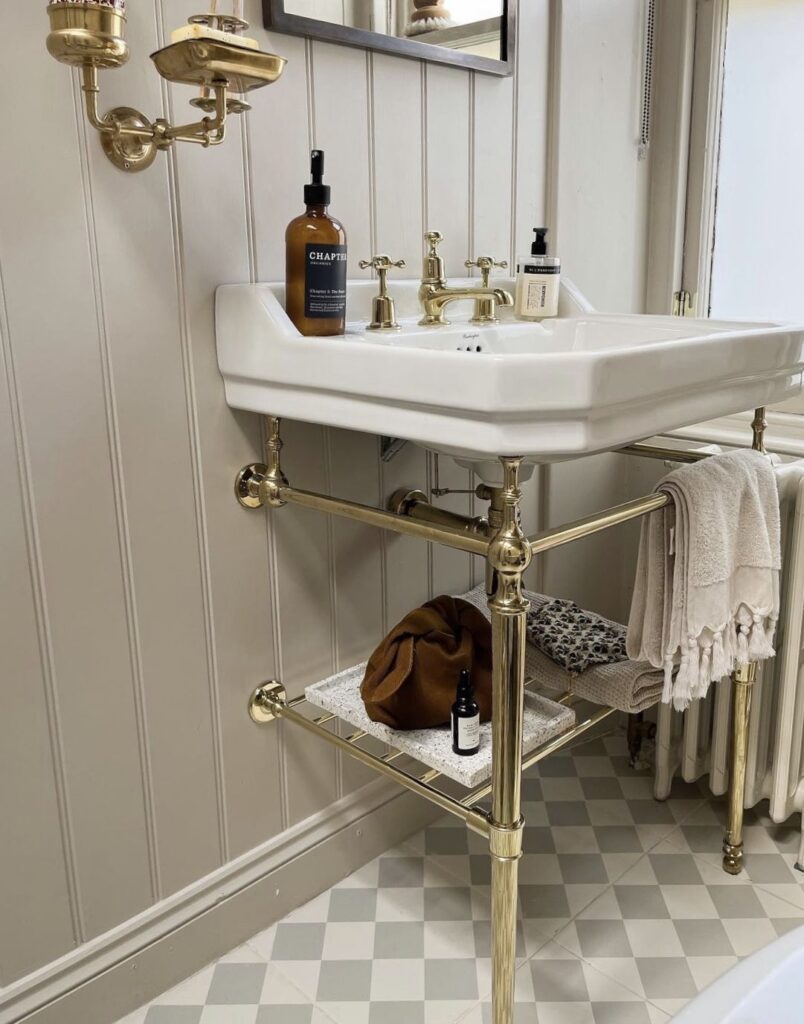
Perfect pairings:
Roll-top baths
Console or pedestal basins with an exposed bottle trap
Classic metro tiles, wood panelling or patterned floor tiles
Traditional taps are a great choice if you’re aiming for elegance and timelessness. They’re also surprisingly versatile when paired with more contemporary pieces for a “modern classic” feel.
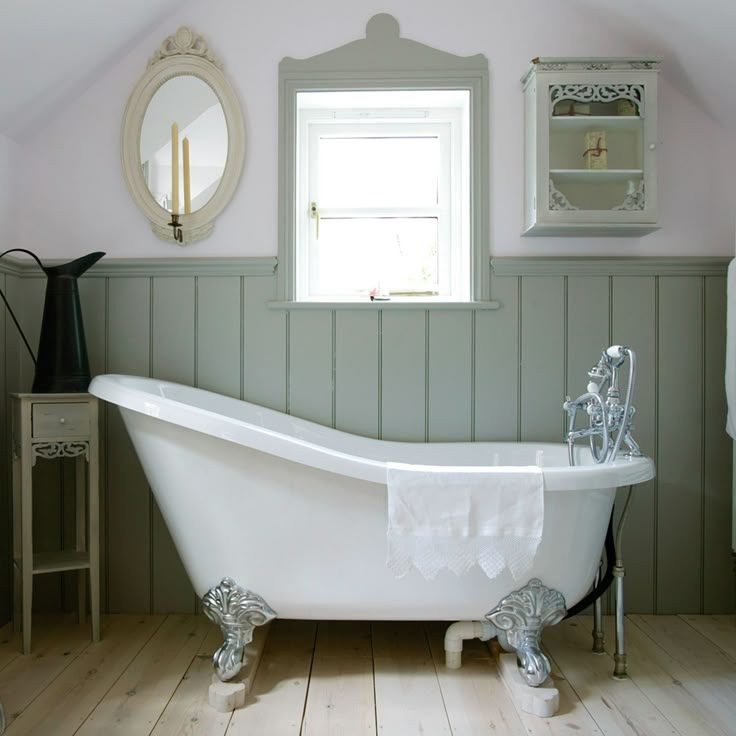
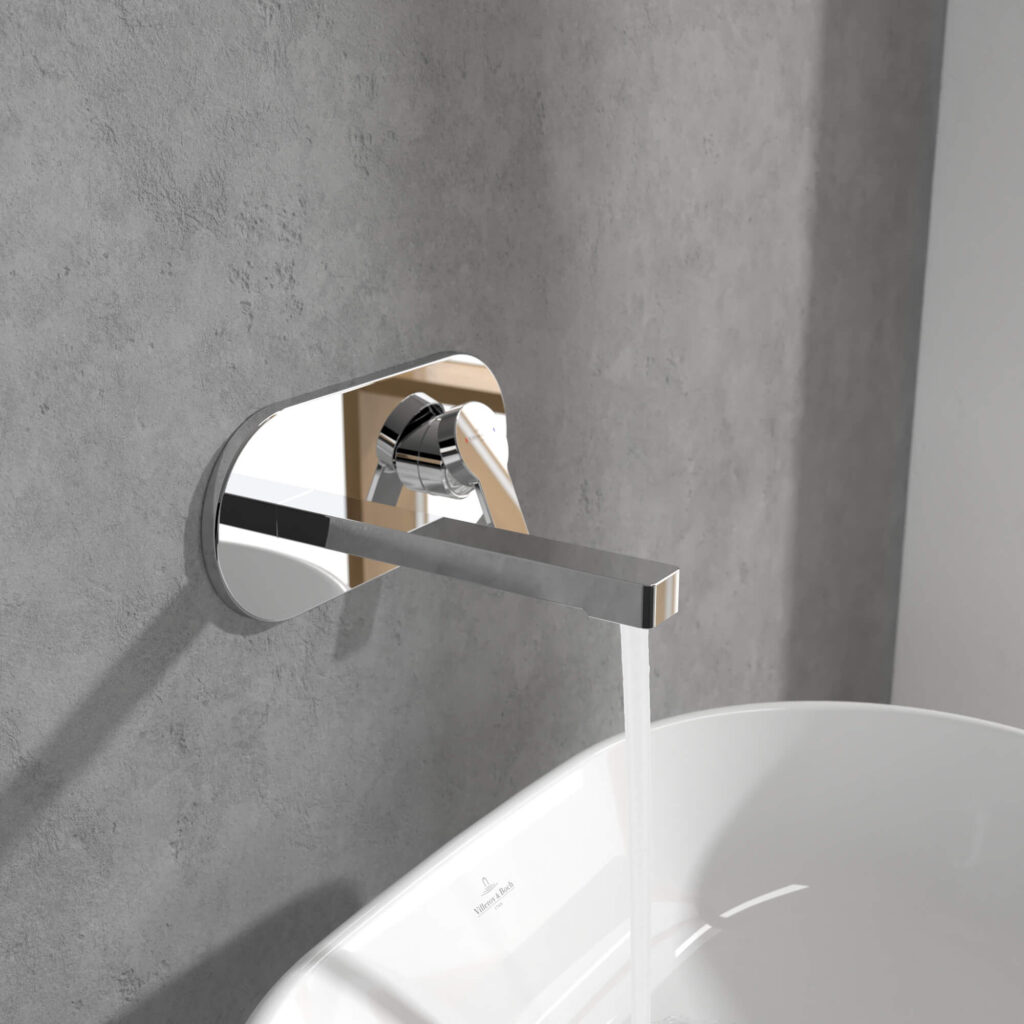
Modern taps are all about minimalism, clean lines, and smooth operation. They’re ideal for contemporary renovations or anyone who wants a sleek, streamlined bathroom with minimal fuss.
Common features:
Single lever or touch controls
Straight or angular spouts
Wall-mounted or counter-mounted designs
Finishes like matte black, brushed brass, rose gold or chrome
Popular modern tap types:
Monobloc taps: One tap unit combining hot and cold, often with a single lever.
Wall-mounted mixers: Clean and unobtrusive, especially good for countertop basins or compact spaces.
Waterfall taps: Flat spouts that create a gentle cascade of water – a statement feature.
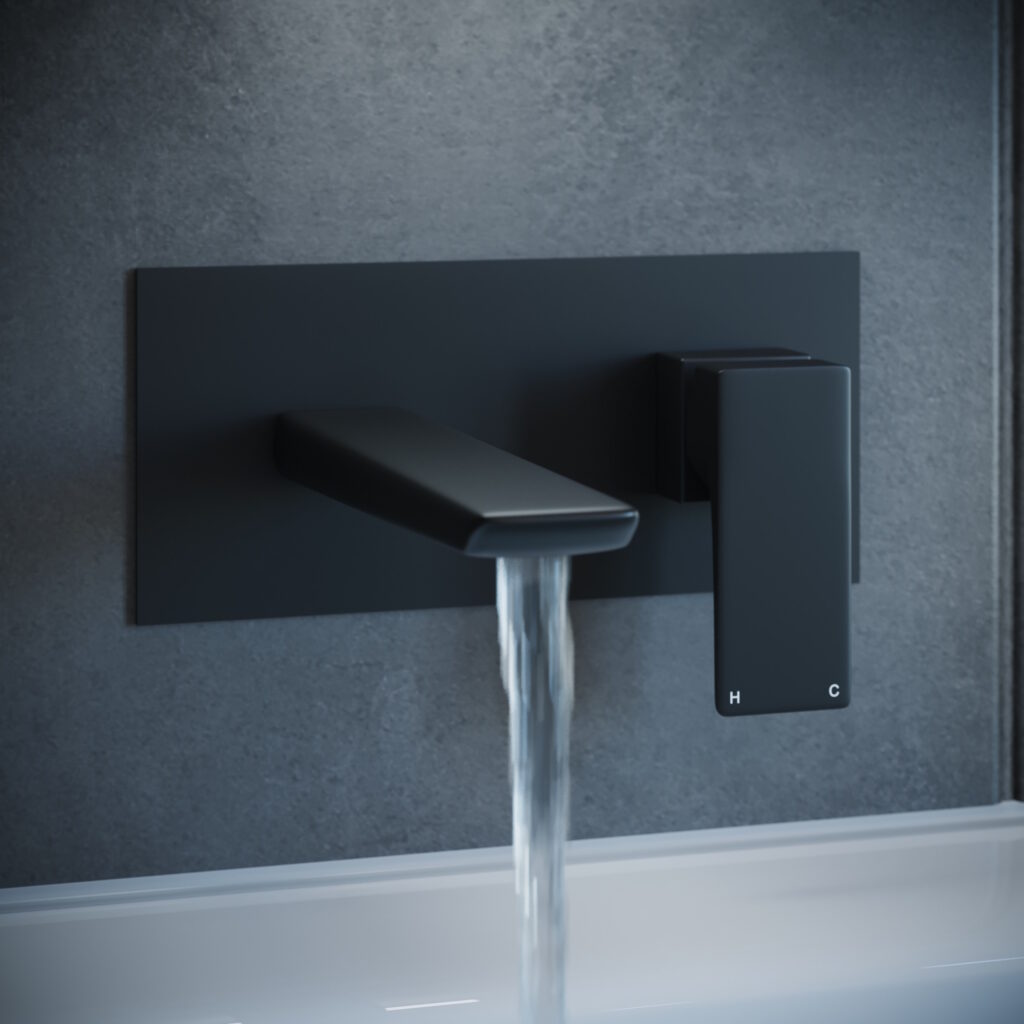
Perfect pairings:
Vessel sinks or countertop basins
Wall-hung furniture or floating vanities
Large-format tiles, microcement, or wet room setups
As well as looking sleek, modern taps also often come with unique features. Look into water-saving aerators, touchless sensors and thermostatic controls for that extra little touch of practicality which is ideal for busy family homes, spa-style en-suites, or accessible bathrooms.
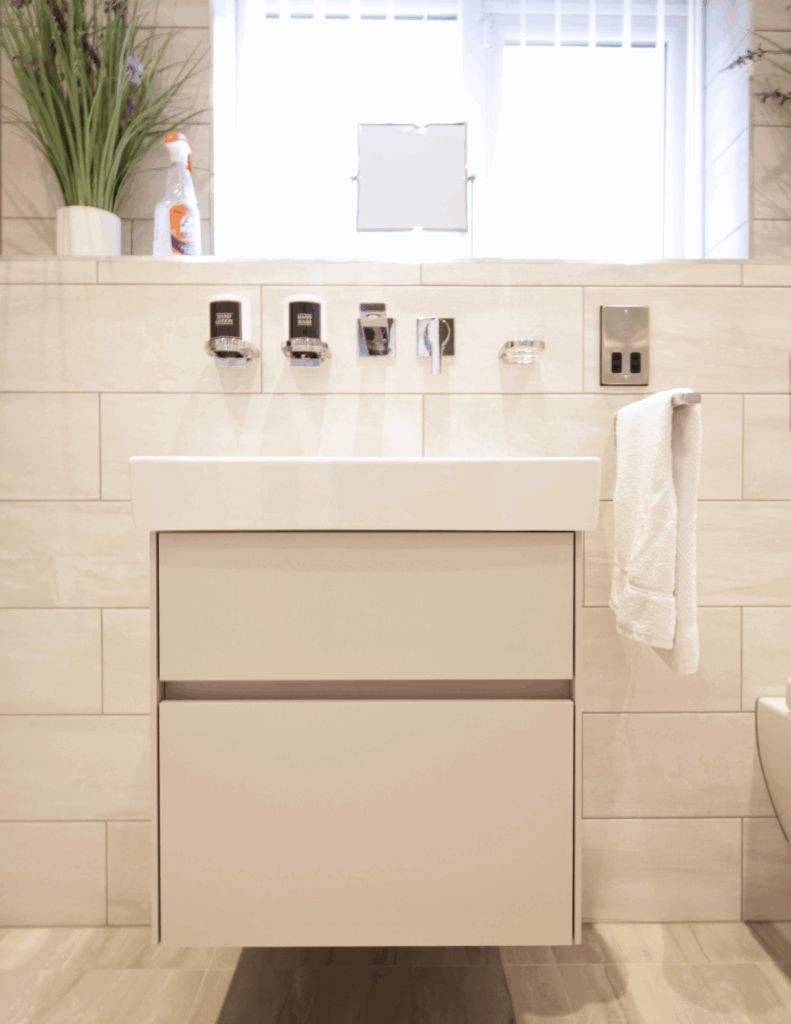
Historically chrome has always been the go to for homeowners taking on a bathroom renovation but the last few decades have seen new finishes become increasingly popular. The finish you choose can totally transform the look and feel of the overall bathroom. Here just a few of the options to consider:
Chrome
Timeless, versatile, and budget-friendly. Reflects light beautifully.
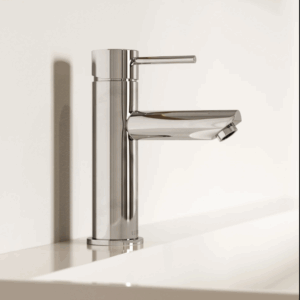
Brushed brass
Adds instant warmth and a boutique hotel feel.
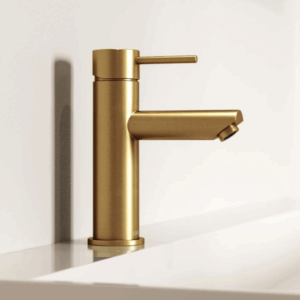
Matte black
A bold, contemporary choice that works well with light-toned tiles.
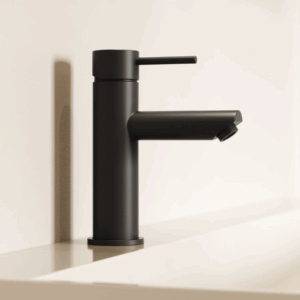
Rose gold or bronze
Great for glam or Art Deco-inspired spaces.
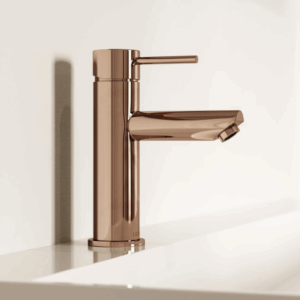
Top Tip: Match your tap finish to other fittings like towel rails, shower valves and handles for a cohesive feel.
Tap placement isn’t just about aesthetics, it affects ease of use, plumbing, cleaning, and how your bathroom feels overall. From classic setups to contemporary layouts, choosing the right location for your taps is key to a beautiful and functional design.
Let’s explore the three main placement options: on the basin or bath itself, wall-mounted, and floor-standing, and where each works best:
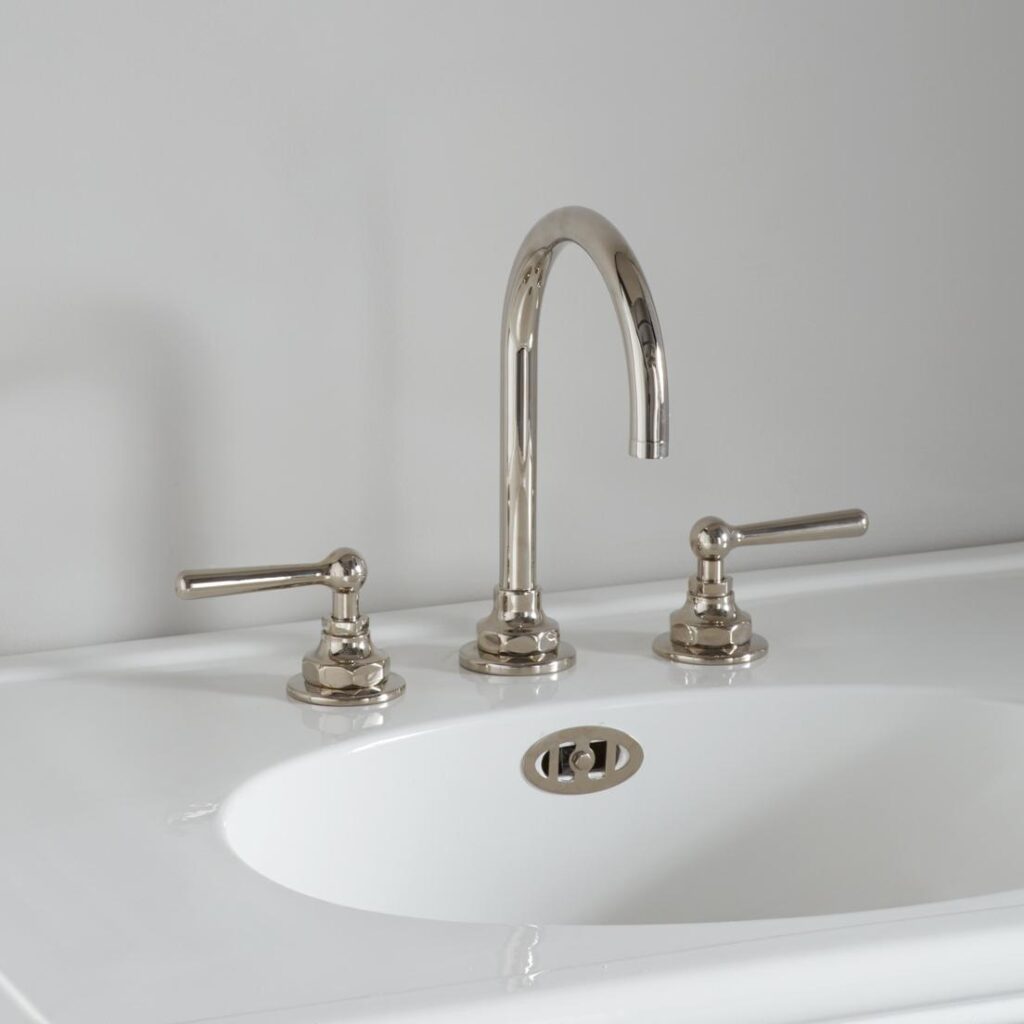
What it is:
These taps are fitted directly onto the surface of the basin or bath (also called the ‘deck’), either as a single mixer tap or as two individual hot and cold taps.
Where it works well:
Standard basins with pre-drilled tap holes
Inset baths with a ledge or flat rim
Cloakrooms and family bathrooms where simplicity and accessibility are key
Benefits:
Easier and more affordable to install
Familiar and intuitive to use
Best for:
Traditional bathrooms, budget-friendly renovations, and spaces where plumbing is already in place and you want to avoid major changes.
Design tip:
Go for polished chrome or nickel on classic pillar taps for a timeless look, or choose matte black or brushed brass monoblocs to give a modern twist to a simple setup.
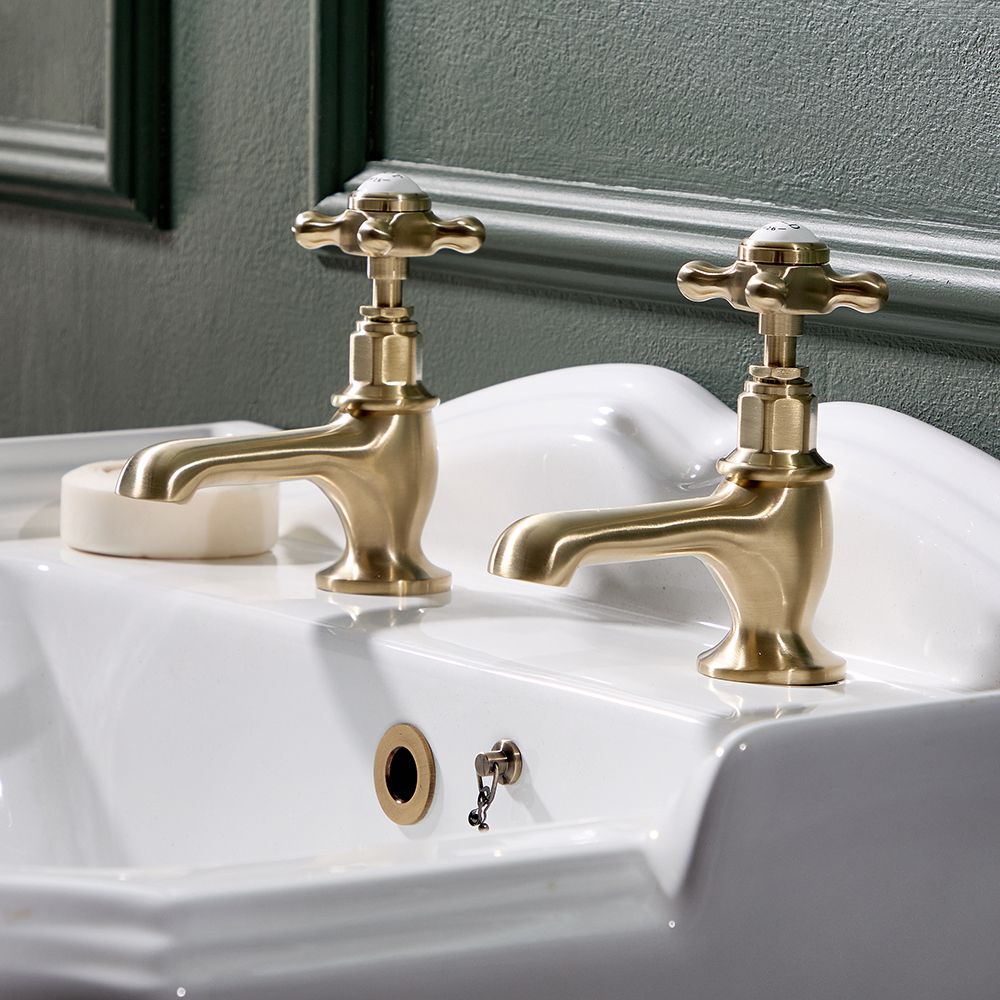
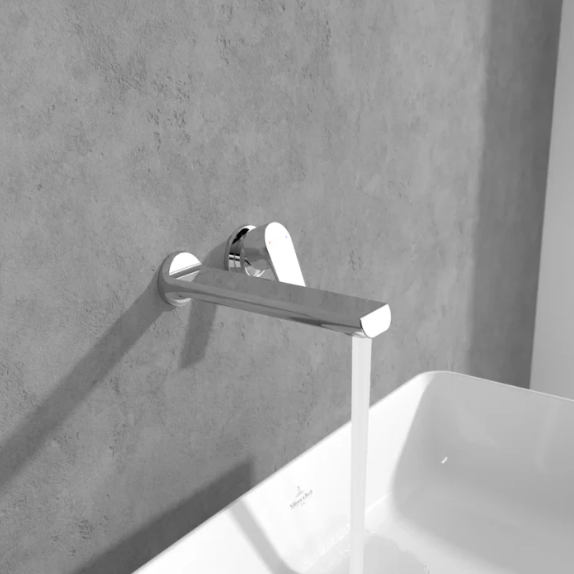
What it is:
Wall-mounted taps are installed into the wall above the basin or bath, with only the spout and handles visible. The plumbing and fixings are hidden within the wall.
Where it works well:
Contemporary bathrooms with countertop or vessel basins
Minimalist or spa-style spaces where clean lines and a seamless finish are desired
Small bathrooms, where reducing surface clutter makes the room feel more open
Benefits:
Creates a sleek, floating look with less visual clutter
Easier to keep the basin or bath surface clean
Perfect for vessel sinks or where there’s no room for deck-mounted taps
Considerations:
Requires deeper walls or boxing in for pipework
More complex installation so they’re best suited for full renovations.
Any post-installation maintenance may mean opening up the wall
Best for:
Design-led bathrooms, wet rooms, en-suites and anyone aiming for a luxe, high-end look.
Design tip:
Wall-mounted taps pair beautifully with statement tiles or microcement backdrops. Use a finish that contrasts with the wall surface for an eye-catching focal point.
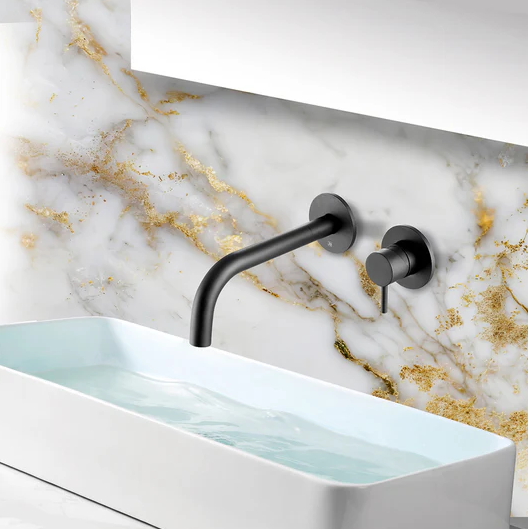
Each placement needs different plumbing considerations, so it’s important to finalise tap choices early in your renovation.
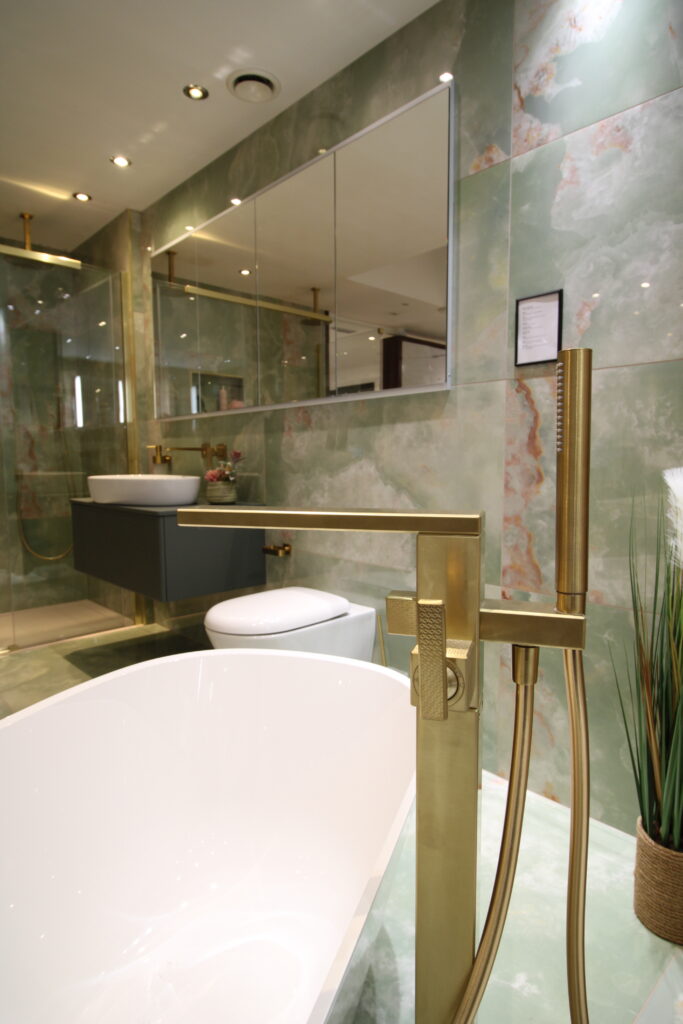
What it is:
Floor-standing taps rise from the floor and arch over into the bath, usually freestanding tubs like roll-top or slipper designs. They often come with a handheld shower attachment.
Where it works well:
Large bathrooms with space to feature a freestanding bath
Luxury en suites or master bathrooms where the bath is the centrepiece
Benefits:
Dramatic and luxurious to make a real style statement
Flexibility in placement, these can be installed wherever there is access to plumbing so you’re not stuck to aligning your bath against a wall.
Available in a wide variety of styles so works well with both traditional and modern bathroom decor.
Considerations:
Needs floor-accessible plumbing
Installation is more complex and often more expensive
Tends to need more space around the bath
Best for:
Boutique-style bathrooms, heritage conversions, or anyone wanting a wow-factor freestanding bath setup.
Design tip:
Go bold with brushed brass or black finishes to turn your taps into a sculptural feature, or opt for classic chrome to keep things elegant and timeless.
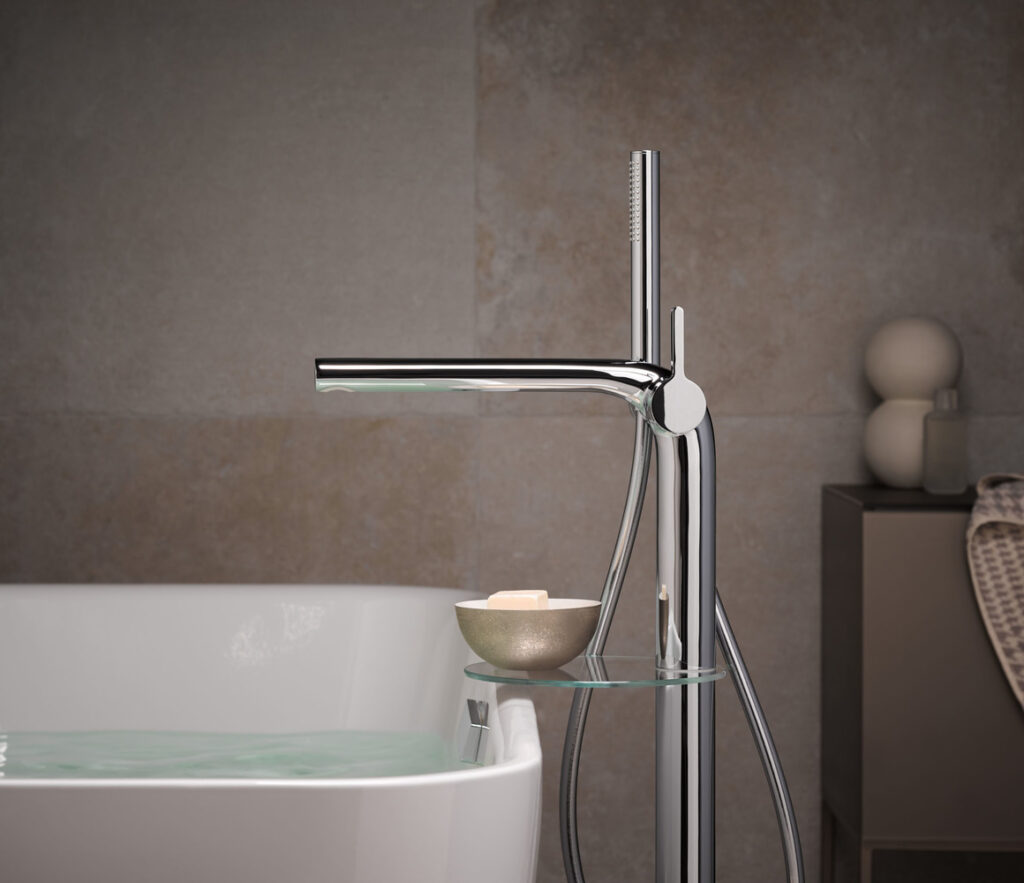
Combine hot and cold water through a single spout.
Modern and practical, especially for small basins.
Easier to control water temperature and flow.
Separate taps for hot and cold.
Great for classic styles and period homes.
May offer more visual balance with certain ceramicware.
Not all taps work with all water systems. Before choosing your design, check your home’s water pressure:
Low pressure (gravity-fed systems) may limit your options. Look for taps rated for low pressure (usually 0.2 bar).
High pressure (combi boiler or pressurised system) means you can opt for designer taps, rainfall heads and mixers.
Not sure? We can check this for you as part of your bathroom design consultation.
The perfect tap isn’t just about looks, it’s about the way you use your bathroom every day. A well-chosen tap can add character, enhance practicality, and complete your look.
Need help finding the right fit?
Come and see our bathroom displays in our showroom. Our helpful designers will guide you through the choices and find the ideal tap for your home.
Mixer taps combine hot and cold water into a single spout. Separate (or pillar) taps have individual hot and cold controls.
No. Some taps are designed for low-pressure systems always check pressure requirements before buying.
Not always. Wall-mounted taps require hidden plumbing and work best with countertop or wall-hung basins.
Matte black and brushed brass show fewer watermarks than chrome but require gentle, non-abrasive cleaning products.
Classic crosshead or lever taps with ceramic detailing in chrome or nickel are perfect for period-inspired bathrooms.
Yes, and it’s recommended! Matching taps, shower valves and accessories creates a cohesive, polished look.
Floor-standing bath taps with a handheld shower are a stunning option. Just make sure there’s space and plumbing access.
Yes – especially for wall-mounted or floor-standing taps that require concealed pipework or high pressure compatibility.
Yes. Look for taps with flow restrictors or aerators to reduce water use without compromising performance
Chrome is the most universally loved finish – but brushed brass and black are becoming modern classics.
Take the first step to transforming your bathroom.
Visit our showroom today.
We take care of your build